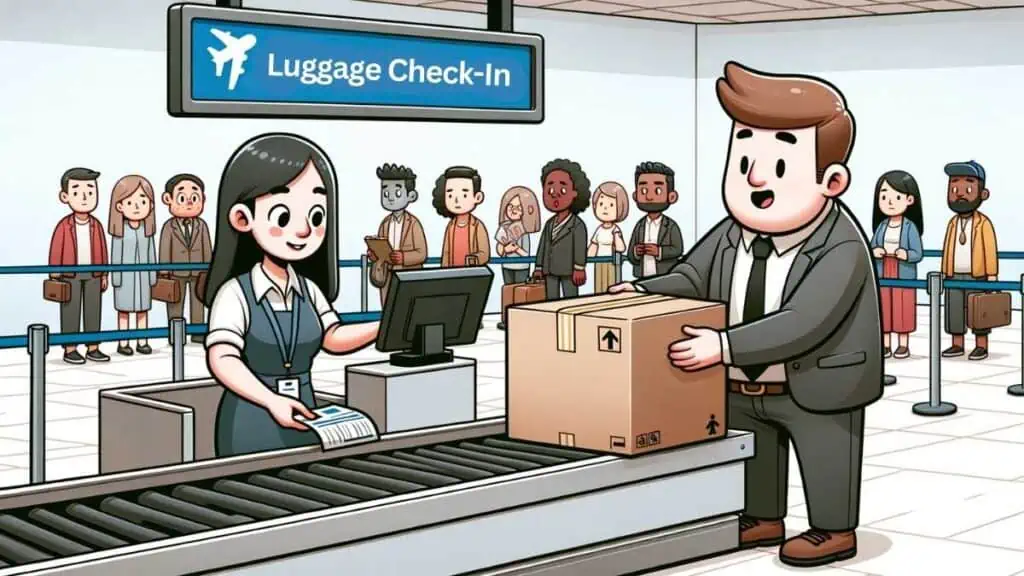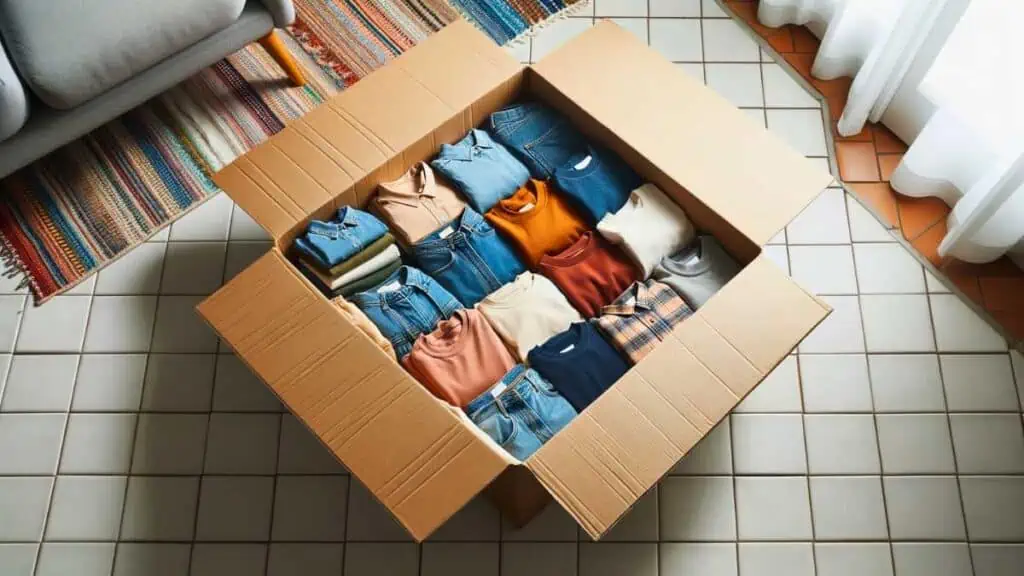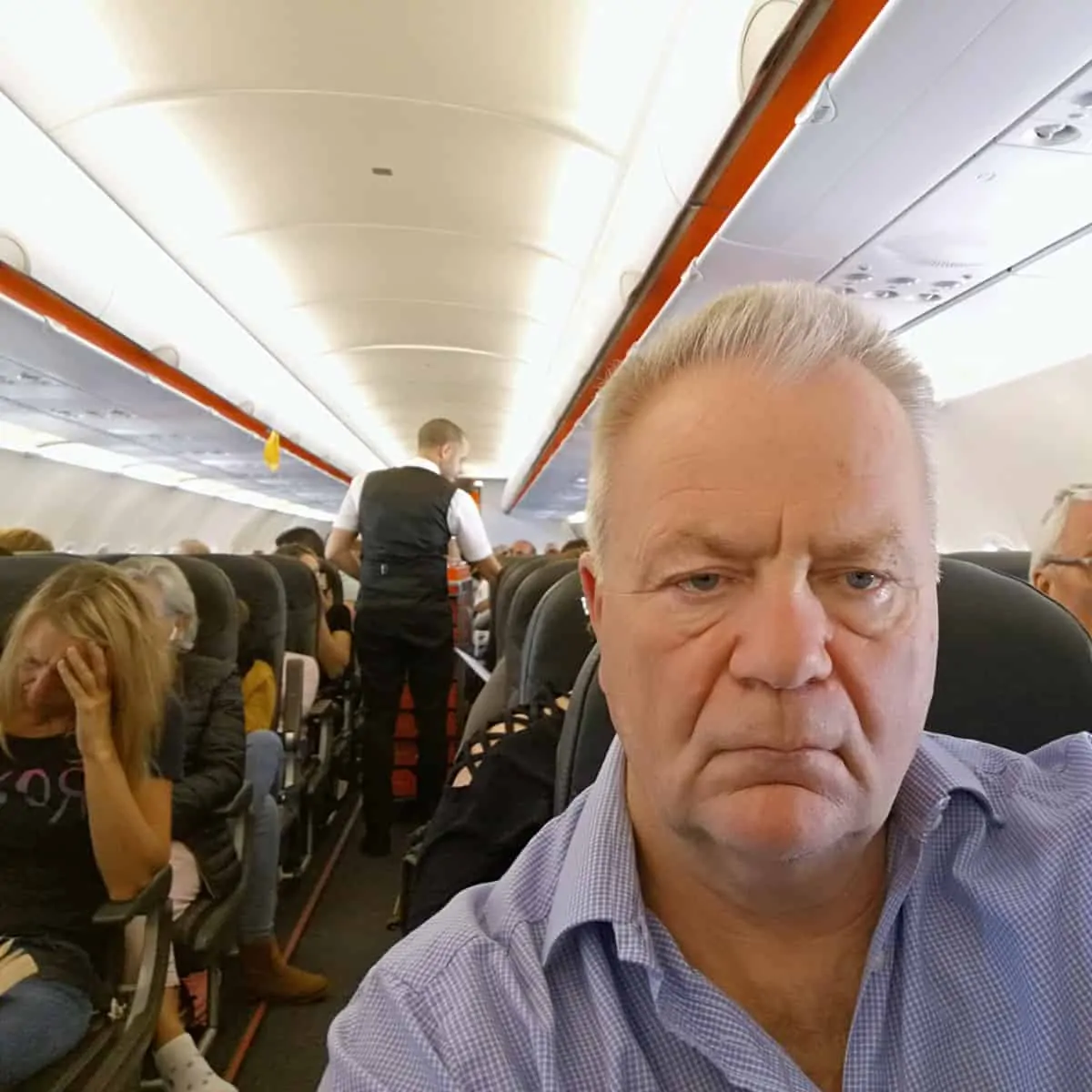Traveling can sometimes require unconventional luggage solutions. One question often arises is whether you can check a cardboard box on a plane instead of a traditional suitcase.
The simple answer is yes. You can use a cardboard box as checked luggage on most airlines. However, some specific rules and restrictions apply to cardboard boxes as checked luggage.
Airlines usually require that the box meet size and weight restrictions for standard checked luggage. While most airlines will accept a cardboard box as checked luggage, additional fees may apply if the box exceeds the airline’s requirements.

Key Takeaways
- Cardboard boxes can be used as checked luggage on most airlines.
- Ensure your box meets the airline’s size and weight restrictions to avoid additional fees.
- Familiarize yourself with potential airline-specific regulations and security measures before packing a cardboard box as luggage.
Contents
How To Check a Cardboard Box
Yes, you can use a cardboard box as your checked luggage on a plane. However, to ensure a smooth check-in process and avoid additional fees, keep a few things in mind.
First, ensure that the dimensions and weight of your cardboard box meet the airline’s size and weight limitations for standard checked luggage. If your box exceeds these restrictions, you may be charged extra fees at the airline check-in counter.
When packing your cardboard box, ensure the contents inside are well-protected and securely packaged, especially if you carry fragile or valuable items. Use padding materials, such as bubble wrap or foam, to minimize the risk of damage during transit. Additionally, seal the box well with tape to prevent it from opening or getting damaged while being handled by airline staff.
Label your cardboard box clearly with your name, phone number, and destination address printed on the outside. This will not only help identify your checked item at the baggage claim area but also assist the airline staff in case they need to contact you regarding your luggage.
At the airline check-in counter, inform the staff that you’re checking in a cardboard box, so they can handle it appropriately and attach the necessary baggage tags. Depending on the airline’s policy, they might require you to sign a limited liability release form for non-conventional baggage, acknowledging that the airline is not responsible for any damage to the box or its contents.
Packing Tips for Cardboard Boxes
When preparing to check a cardboard box on a plane, it’s important to pack it properly to protect your items. Here are some tips for packing a cardboard box that will be checked as luggage.
Secure your items: Start by wrapping fragile items in bubble wrap or another cushioning material. Add extra padding to especially delicate items like glass objects or electronics.
If you are packing an item in its original packaging, it may already have protective materials, but you should still add extra padding if required.
Tape it up: Use strong, durable tape, such as duct tape, to seal all the edges and seams of the box. This will help prevent the box from coming apart during transportation.
If your box has any openings or gaps, be sure to tape them closed to prevent items from falling out.
Label it: Clearly label your box with your name, address, and phone number. This will help airline staff locate your box if it gets lost or misplaced. You might also want to write “Fragile” on the box if it contains delicate items, but remember that this does not guarantee gentle handling.
Wrap it: Consider wrapping your entire box in plastic wrap for extra protection and security. This will help keep the box intact, prevent the tape from peeling off, and provide a barrier against moisture and dirt.
Ensure the wrap is tightly secured around the box, and avoid covering any labels you’ve added.
Consider factory-sealed boxes: If you are shipping an item in its original, factory-sealed packaging, you may feel more confident about its protection.
However, remember that factory-sealed boxes might not have sufficient padding for air travel, so it’s a good idea to add extra cushioning as needed.

Airline Specific Regulations
Different airlines have their own regulations for checking cardboard boxes as luggage. Here are some guidelines for specific airlines:
American Airlines: Generally, American Airlines allows you to check a cardboard box as luggage if it meets its size and weight restrictions. However, when flying to selected destinations or during busy travel seasons, you may not be allowed to check a cardboard box.
You may be required to sign a damage waiver before checking your box, as they are not as sturdy as traditional luggage. You can find more information on American Airlines’ website or by contacting their customer service.
Alaska Airlines: Alaska Airlines does not have explicit rules against checking cardboard boxes as luggage, but the ultimate decision will depend on the specific circumstances, such as size and security conditions.
Your cardboard box must meet Alaska Airlines’ weight and size restrictions for checked luggage. For more details or clarification, contact Alaska Airlines’ customer service through their website or phone number.
When checking a cardboard box on any airline, make sure to:
- Double-check the airline’s size and weight restrictions for checked luggage.
- Ensure that the box is sturdy and well-secured, able to withstand the rigors of transportation.
- Clearly label your cardboard box with your name, address, and contact information.
- Be aware that you may be required to sign a damage waiver, absolving the airline of responsibility for damage during transit.
Additional Fees
When checking a cardboard box on a plane, it’s essential to consider the additional fees you may encounter. As with any piece of checked luggage, baggage fees may apply to your cardboard box. These fees are often determined by the airline and can vary depending on your destination and the specific terms of your ticket.
Remember the weight limits and restrictions set by the airline. Your cardboard box must comply with these restrictions to avoid extra charges.
Generally, airlines enforce a maximum weight limit for checked baggage, ranging from 50 to 70 pounds (23 to 32 kg) depending on the airline and the route. Surpassing this allowed weight may result in additional fees, which can be quite steep.
During busy travel seasons, airlines might be more strict about enforcing baggage fees and size and weight restrictions. To avoid unpleasant surprises, it’s crucial to check the airline’s policy before traveling with a cardboard box as checked luggage.
International Flight Rules
When planning to check a cardboard box on an international flight, it’s crucial to understand the airline rules that govern air travel. Different airlines have varying size and weight restrictions for checked baggage, which also apply to cardboard boxes.
Check with your specific airline regarding their requirements to avoid any surprises at the airport.
United States: In the United States, many airlines allow passengers to check cardboard boxes as long as they adhere to the size and weight limitations. Remember that you might be asked to sign a damage waiver absolving the airline of responsibility for any damages incurred during transit.
Central America and South America: Similar to the United States, airlines operating in Central America and South America are also permitted to check cardboard boxes as long as they comply with the weight and size restrictions. Ensure the box is adequately sealed and packed to avoid any damages during transportation.
Domestic Flights vs. International Flights: While domestic flights within a country tend to have more relaxed rules, international flights might have stricter regulations. Verifying your airline’s international flight rules before packing your cardboard box is essential to ensure compliance.
Special Cases
When checking special items on a plane, such as sports equipment, musical instruments, or large-sized items, you should be aware of specific airline guidelines and restrictions. While a cardboard box is generally an acceptable form of checked luggage, specific rules apply to special cases that must be considered.
Sports Equipment and Bike Bags: If you plan to bring your sports equipment, such as a bike, in a bike bag or sturdy cardboard box, ensure it is well-packed and protected.
While most airlines allow sports equipment as checked luggage, they may charge additional fees or request specific packaging. Be sure to check the airline’s guidelines for sports equipment.
I have taken a new bike, still in its original cardboard box, as sports baggage on an international flight without any issues.
Musical Instruments: Generally, you can carry musical instruments in a strong box or a flight case, as checked luggage or carry-on, provided it adheres to the airline’s size and weight restrictions.
Smaller instruments like guitars or violins can be carried in the cabin, whereas larger or more fragile items may need to travel as checked luggage. Check with your airline for specific policies regarding musical instruments.
Special Items and Large Boxes: If you have a big box or special items such as artwork, electronics, or fragile items, it may be best to use a strong cardboard box or a plastic box. Ensure your items are securely packed and padded to withstand handling during your flight.
Security Measures and Considerations
When checking a cardboard box on a plane, it’s essential to know the security measures and considerations set by the Transportation Security Administration (TSA) and airport security agencies. These organizations are responsible for ensuring the safety of passengers and their belongings during air travel.
Before checking your cardboard box, ensure it complies with the airline’s size and weight restrictions for checked baggage. Additionally, it should be sturdy enough to endure the screening and transportation processes.
Always label your box clearly, similar to how luggage is tagged. This helps both you and the airline locate your belongings during baggage claim and in case of lost luggage.
At the airport, your cardboard box will be inspected by TSA officers. The contents of your box should follow the TSA’s guidelines for prohibited items. Liquid or gel items larger than 3.4 oz (100 ml) are not allowed in checked baggage.
Failure to comply with TSA guidelines may result in civil penalties and your box being refused for checked baggage. Knowing the requirements and ensuring your cardboard box adheres to these regulations will help avoid delays or inconveniences during the security screening process.

I have been traveling around the world by air since the early 70s and living overseas too. I worked for British Airways for a number of years and I am also a private pilot. About Me


